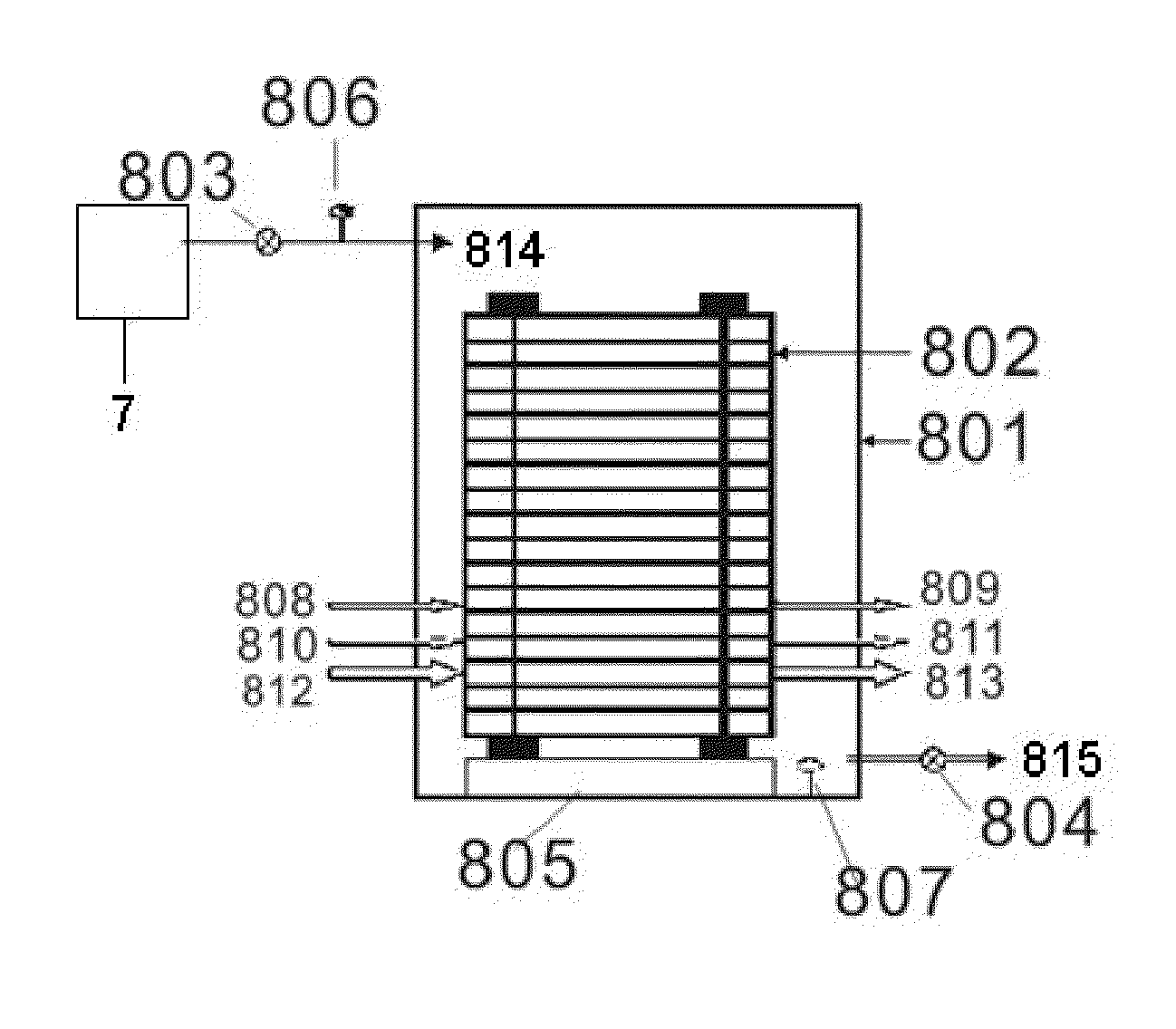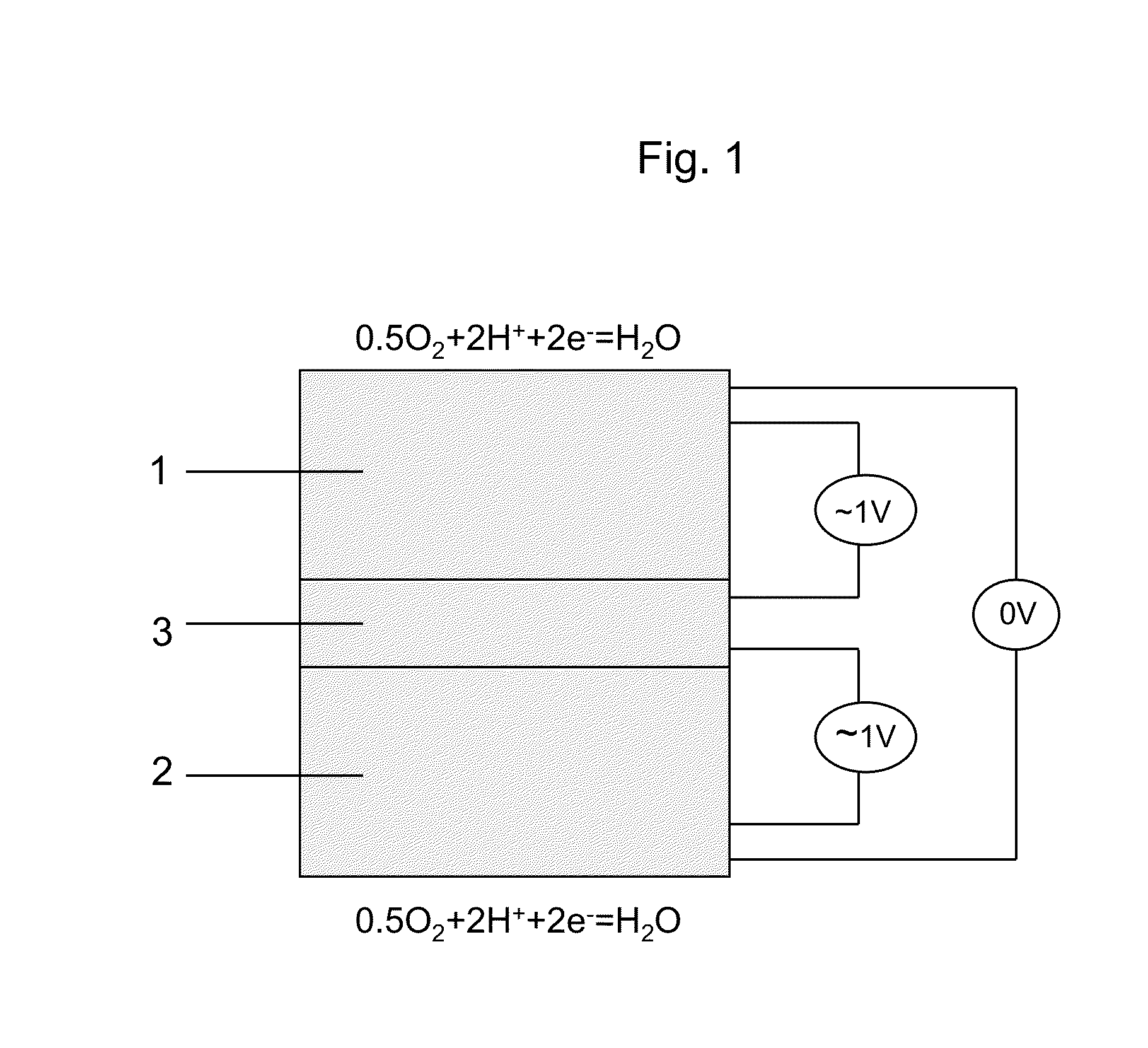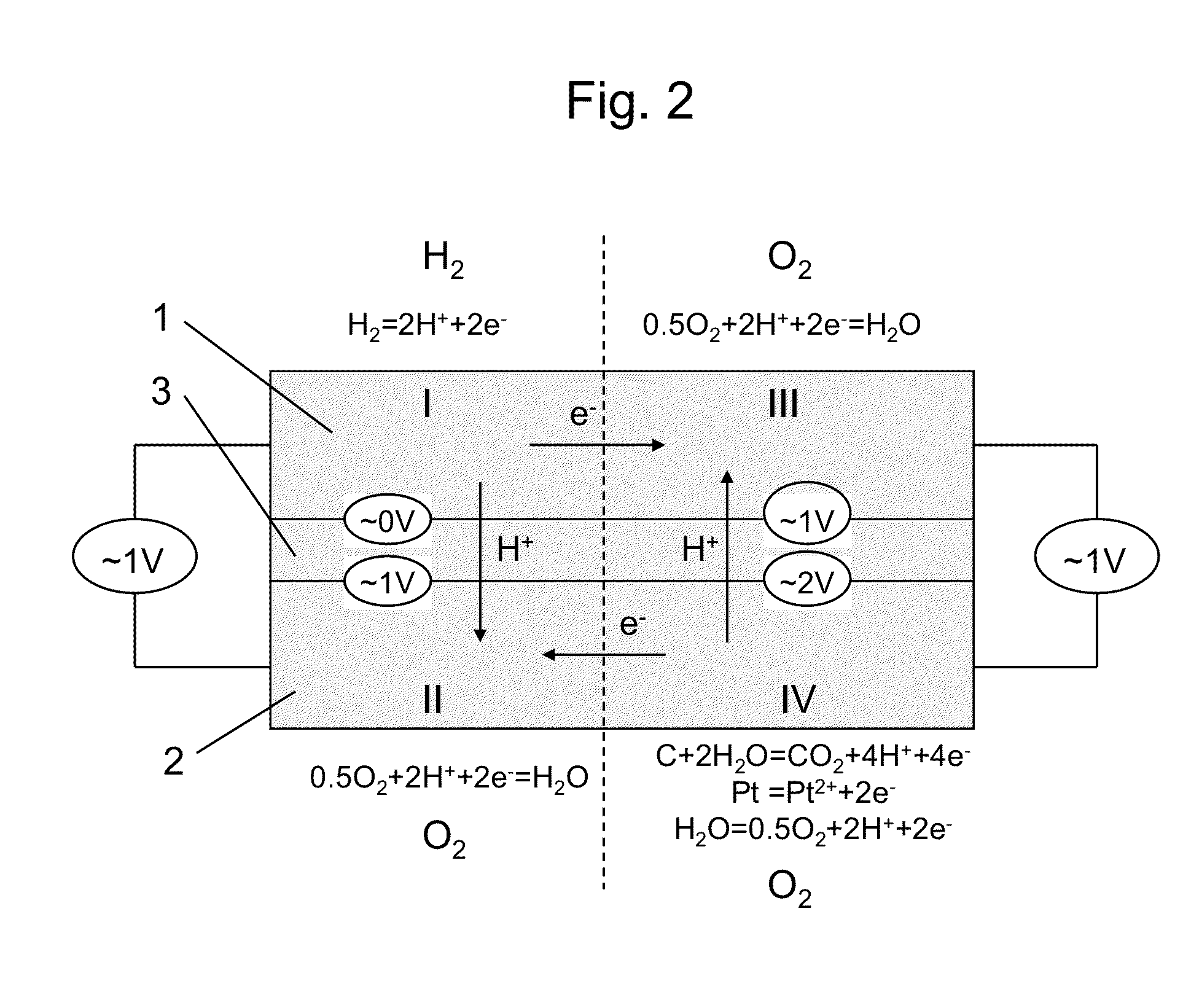Method and Device for Enhancing Fuel Cell Lifetime
a fuel cell and lifetime technology, applied in the field of fuel cells, can solve problems such as ocv damage and start, and achieve the effect of preventing h2 losses and increasing the durability and lifetime of fuel cells
- Summary
- Abstract
- Description
- Claims
- Application Information
AI Technical Summary
Benefits of technology
Problems solved by technology
Method used
Image
Examples
example 1
[0096]FIG. 10 illustrates a shutdown procedure when the gas-tight enclosure is already filled with H2 and the enclosure-H2-inlet-solenoid valve is in the opened state. When the fuel cell system needs not to provide power to the external load, break the electrical connection between the fuel cell system and the said load by opening the contactor or other connection device; close the stack-air-inlet solenoid valve and the stack-air-outlet solenoid valve; close the stack-H2-outlet solenoid valve and the stack-H2-inlet solenoid valve; and perform other conventional steps to let the fuel cell system into either idling or shutdown state.
[0097]In this example, the enclosure-H2-inlet-solenoid valve keeps open in the entire time period while the fuel cell system is in either operational or non-operational state. Because the enclose 801 is gas-tight, H2 concentration within the enclosure changes little in the entire process. In case that the enclosure 801 does not achieve complete gas-tight d...
example 2
[0099]FIG. 11 illustrates another shutdown procedure when the gas-tight enclosure is already filled with H2 and the enclosure-H2-inlet-solenoid valve is in the opened state. When the fuel cell system needs not to provide power to the external load, break the electrical connection between the fuel cell system and the said load by opening the contactor or other connection device; close the stack-air-inlet solenoid valve and the stack-air-outlet solenoid valve; close the stack-H2-outlet solenoid valve; and perform other conventional steps to let the fuel cell system into the non-operational state.
[0100]In the third step of this procedure only the stack-H2-outlet solenoid valve is closed. In other word, the stack-H2-inlet solenoid valve is not closed. Such an arrangement can assure that the anode chamber of the stack 802 is always filled with H2, and facilitate the diffusion of H2 from the anode to the cathode, and thus the oxygen in the cathode can be consumed faster by H2 diffusing th...
example 3
[0101]FIG. 12 illustrates a shutdown procedure when the gas-tight enclosure is filled with air during the operation of the fuel cell system. When the fuel cell system needs not to provide power to the external load, break the electrical connection between the fuel cell system and the said load by opening the contactor or other connection device; close the stack-air-inlet solenoid valve and the stack-air-outlet solenoid valve; close the stack-H2-outlet solenoid valve; open the enclosure-H2-inlet solenoid valve 803 and the enclosure-H2-outlet solenoid valve 804 after the stack voltage drops to nearly 0 V; close the enclosure-H2-outlet-solenoid valve 804 two minutes later; and perform other conventional steps to let the fuel cell system into the non-operational state.
[0102]In this example, the enclosure-H2-inlet-solenoid valve 803 and enclosure-H2-outlet-solenoid valve 804 are opened after the stack voltage drops to nearly 0 V; and enclosure-H2-outlet-solenoid valve is closed after the...
PUM
| Property | Measurement | Unit |
|---|---|---|
| absolute pressure | aaaaa | aaaaa |
| thickness | aaaaa | aaaaa |
| pressure | aaaaa | aaaaa |
Abstract
Description
Claims
Application Information
 Login to View More
Login to View More - R&D
- Intellectual Property
- Life Sciences
- Materials
- Tech Scout
- Unparalleled Data Quality
- Higher Quality Content
- 60% Fewer Hallucinations
Browse by: Latest US Patents, China's latest patents, Technical Efficacy Thesaurus, Application Domain, Technology Topic, Popular Technical Reports.
© 2025 PatSnap. All rights reserved.Legal|Privacy policy|Modern Slavery Act Transparency Statement|Sitemap|About US| Contact US: help@patsnap.com



